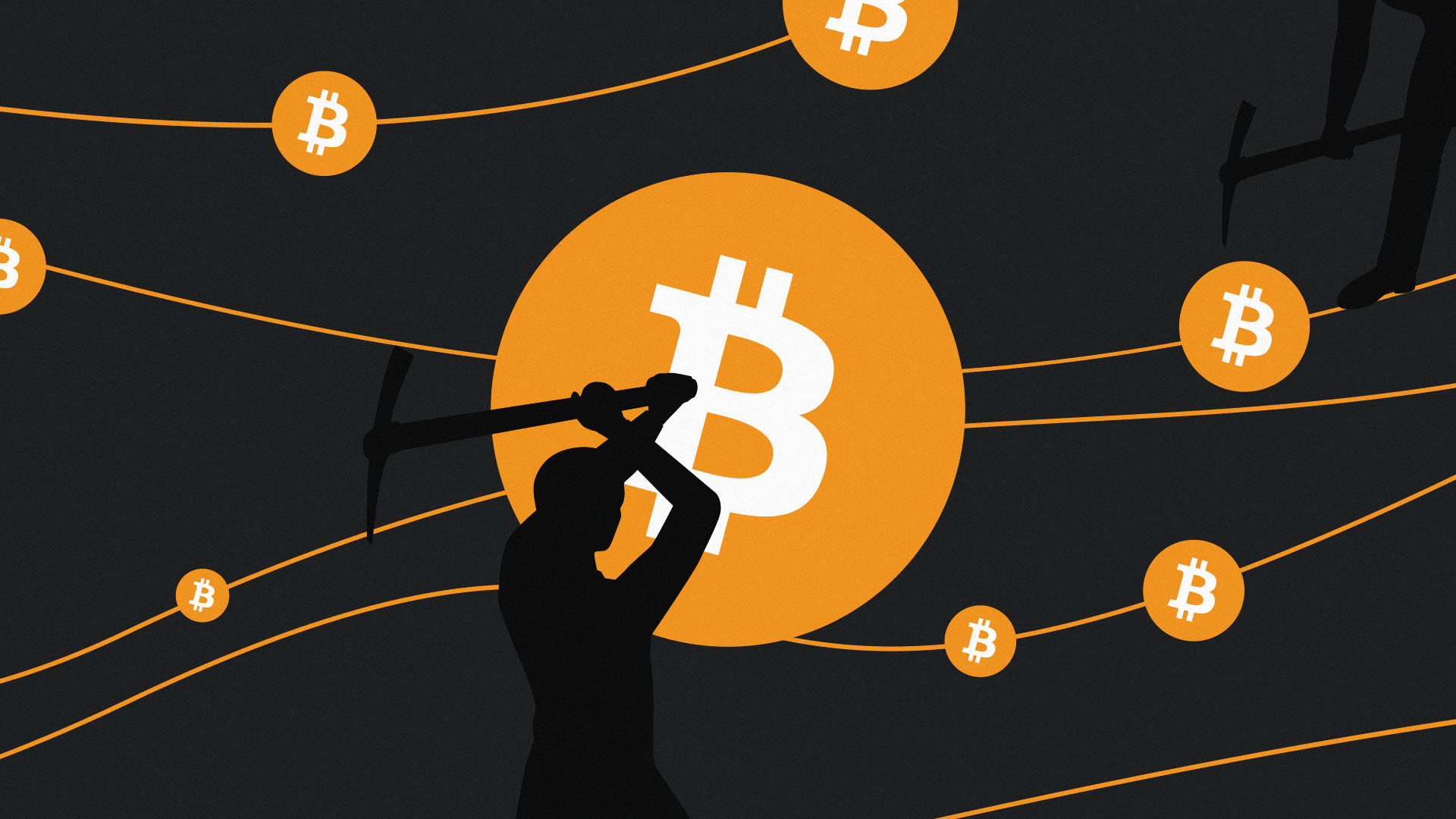The world of Bitcoin mining has evolved significantly since its early days. While most miners now join large pools, BTC solo mining remains a topic of fascination for enthusiasts seeking complete control over their rewards. But is solo mining still viable? Let’s dive deep.

What Is BTC Solo Mining?
BTC solo mining, also known as bitcoin solo mining, refers to the process of mining Bitcoin independently, without joining a pool. Unlike pool mining, where rewards are distributed proportionally among participants, solo miners receive $100% of the block reward if they successfully mine a block.
Key Differences Between Solo and Pool Mining:
td {white-space:nowrap;border:0.5pt solid #dee0e3;font-size:10pt;font-style:normal;font-weight:normal;vertical-align:middle;word-break:normal;word-wrap:normal;}
| Feature | Solo Mining | Pool Mining |
| Reward Distribution | Solo miners get full rewards. | Pool miners share based on contributed hashrate. |
| Probability of Success | Lower chances of finding a block frequently, especially with low personal hashrate. High variance. | Higher, more consistent probability of receiving small, frequent payouts. Low variance. |
| Technical Complexity | Requires running a full Bitcoin node and proper hardware setup. | Generally simpler setup, connects to a pool's server. |
| Contribution to Network | Directly contributes to decentralization. | Can potentially lead to centralization if pools become too large. |
How BTC Solo Mining Works
Bitcoin mining relies on solving complex cryptographic puzzles (Proof-of-Work) to validate blocks. Success depends on hashrate, network difficulty, and luck.
Core Concepts:
-
Hashrate vs Block Probability: Higher hashrate increases the chance of finding a block, but individual miners rarely match the aggregate pool power. The ratio of an individual's hashrate to the total network hashrate determines the theoretical probability.
-
Block Reward: Each mined block currently yields 6.25 BTC, halving every 4 years. The expected halving (which reduced the reward from 6.25 BTC) reduced this reward to 3.125 BTC, further increasing the difficulty of solo profitability.
-
Node Synchronization: Solo miners must run a full Bitcoin node to validate transactions and ensure they are working on the correct, longest chain. This requires significant storage (currently over 600 GB) and bandwidth.
-
Software & Wallet: Mining software (cgminer, BFGMiner, etc.) connects directly to the solo miner's Bitcoin Core node instead of a pool server; mined rewards go directly to the miner’s specified wallet address.
BTC Solo Mining Profitability — Reality Check
Profitability depends on several parameters, and the halving event makes these calculations even tighter.
Profitability Parameters:
-
Network Difficulty: The measure of how hard it is to find a new block. It is constantly adjusting, and its level is substantially higher than today, reducing the solo miner's probability of success.
-
Personal Hashrate: Determines the likelihood of mining a block. Solo mining requires a large farm's worth of hashrate to be statistically relevant.
-
Electricity Costs & Equipment: ASIC miners consume significant power, and high electricity costs can wipe out even the small, proportional rewards from pool mining, let alone the highly improbable solo rewards. Cooling and maintenance are also non-trivial costs.
-
Block Rewards & Transaction Fees: Post-halving, the reduced block reward 3.125 BTC) means the transaction fees included in the block become a more critical component of revenue.
Example Calculation (Post-Halving Scenario):
Assuming a high-end Antminer S21 (200 TH/s) after 2025 the halving:
td {white-space:nowrap;border:0.5pt solid #dee0e3;font-size:10pt;font-style:normal;font-weight:normal;vertical-align:middle;word-break:normal;word-wrap:normal;}
| Parameter | Value |
| Hashrate | 200 TH/s |
| Projected Network Difficulty | ~80 to 100 T |
| Block Reward (Post-Halving) | 3.125 BTC |
| Electricity Cost | 0.05/kWh (Low) |
-
Estimated Time to Find a Block (MTTB): Based on a difficulty of 80T, a 200 TH/s miner would theoretically take over 12-15 years to find a single block.
-
Estimated Daily Revenue (Probabilistic): ~$0.05 to $0.08 (highly probabilistic and representing a tiny fraction of a block reward).
-
Estimated Monthly Revenue: ~$1.5 to $2.4 (extremely variable and only realized if a block is found).
Insight: Solo mining for individuals is statistically highly unlikely to yield consistent or profitable returns. The chance of a "lucky" block find is the only real path to profit, and that is akin to a lottery.
Advantages and Disadvantages of Solo Mining
Advantages:
-
Full control over block rewards: No pool fees are deducted, and the entire block reward (3.125 BTC + transaction fees) goes directly to the miner.
-
Contributes to network decentralization: By running an independent node and mining effort, the solo miner reduces reliance on large, centralized pools, enhancing the network's resilience.
-
Censorship resistance: The solo miner is free from any pool-level censorship or rule enforcement on which transactions to include in a block.
Disadvantages:
-
Extremely low probability of block discovery: As network hashrate and difficulty skyrocket, the small individual hashrate becomes insignificant, leading to years, potentially decades, between block finds.
-
High hardware and energy costs: Solo mining requires the most efficient and powerful ASICs to stand even a minuscule chance, leading to significant upfront capital expenditure and high ongoing energy bills.
-
Unstable and unpredictable earnings: The income stream is 100% variance-based. Miners must be prepared to absorb high costs for months or years without any income.
BTC Solo Mining vs Pool Mining
td {white-space:nowrap;border:0.5pt solid #dee0e3;font-size:10pt;font-style:normal;font-weight:normal;vertical-align:middle;word-break:normal;word-wrap:normal;}
| Feature | Solo Mining | Pool Mining |
| Reward Frequency | Very low (100 variance) | Frequent, proportional (PPLNS EPPSschemes) |
| Technical Barrier | High (Full node, software configuration) | Low (Connect to pool server) |
| Costs | High upfront hardware/energy | Shared costs, small pool fee (typically 1%-4%) |
| Security & Decentralization | Supports decentralization and security | Centralized pools can pose systemic risk if dominant |
| Viability for Small Miners | Impractical | Practical, provides consistent cash flow |
How to Start BTC Solo Mining
While not recommended for profit, an enthusiast who understands the risks can proceed:
Step-by-Step Guide:
Acquire an ASIC Miner: Recommended models: AntminerS21, WhatsMiner M60, or future high-efficiency models. Focus on the highest terahash/Joule efficiency.
-
Install Bitcoin Core Node: Download and run the full Bitcoin Core client. Allow it to fully synchronize the entire blockchain (this can take days). This is the single point of truth for your solo mining operation.
-
Configure Mining Software: Install and configure software like cgminer or BFGMiner. The key difference from pool mining is pointing the software's stratum server setting to your local Bitcoin Core RPC port Set Wallet Address: Ensure the mining software is configured with your secure Bitcoin wallet address for reward reception.
-
Monitor Performance: Track hashrate, temperature, and uptime diligently. Connectivity to your local node is crucial.
Tips: Use blockchain explorers to check the current network difficulty and your estimated time to block find (MTTB) calculator. Monitoring tools are vital for ensuring the local node is always up-to-date.
Can Individuals Still Profit from BTC Solo Mining?
No, not for any individual who relies on the revenue for a return on investment.
Given high network difficulty, rising electricity costs, and the reduced 3.125 BTC block reward post-halving, solo mining as an individual is largely impractical. Only large-scale operations with hundreds of petahashes (PH/s), access to extremely cheap or captive energy sources, and institutional-level efficiency have realistic chances of regular block discovery.
However, "lucky" scenarios may occasionally yield full block rewards, though statistically rare. It must be viewed as a high-stakes lottery where the cost of the "ticket" (the ASIC and electricity) is substantial.
Future of BTC Solo Mining
-
Increasing difficulty and halving cycles will continue to make solo mining more challenging, forcing all but the largest miners into pools.
-
Decentralized mining pools (e.g., ckpool, P2Pool alternatives) may offer a hybrid option, allowing miners to retain control over block templates while still pooling efforts to reduce variance. This is often seen as a compromise for decentralization advocates.
-
Future protocols like Stratum V2 aim to optimize mining efficiency and, more importantly, restore pool control to the individual miner, thus addressing one of the core arguments against current centralized pools.
-
Home miners may explore niche opportunities like energy-efficient ASICs or renewable energy integration (solar, wind) where their marginal electricity cost is near zero, making the lottery-style earnings slightly more palatable.
Conclusion — Should You Try BTC Solo Mining?
BTC solo mining is mostly a hobbyist endeavor or a political statement supporting decentralization today. While it provides full control over rewards and supports network resilience, the extremely low probability of finding blocks and high operational costs make it unsuitable for most beginners or anyone seeking a financial return. For consistent, predictable income, pool mining is the only rational choice.
FAQ: BTC Solo Mining
How long does it take to mine 1 BTC solo?
Depends on hashrate; with a single personal miner 200 TH/s, it could take many years, potentially decades, to find a block containing 3. 125BTC, meaning it would take even longer to accumulate 1 full BTC.
What is the minimum hashrate needed for solo mining?
Technically any, but practical profitability (finding a block within a year) requires hundreds of petahashes PH/s or access to power at near-zero cost.
Can you solo mine BTC on a laptop?
No — laptop CPUs/GPUs are far too weak for Bitcoin PoW mining. Bitcoin mining is 100% dominated by specialized ASIC hardware.
What are the best ASICs for solo mining?
The best are the latest models with the highest efficiency (J/TH), such as the Antminer S21 series, WhatsMiner M60 series, and their forthcoming counterparts, to minimize electricity cost per unit of hashrate.
Is solo mining profitable after Bitcoin halving?
Highly unlikely without extremely low electricity costs (ideally <0.02/ k Wh) or massive mining operations PH/s. For the average individual, the reward reduction makes profitability nearly impossible.












